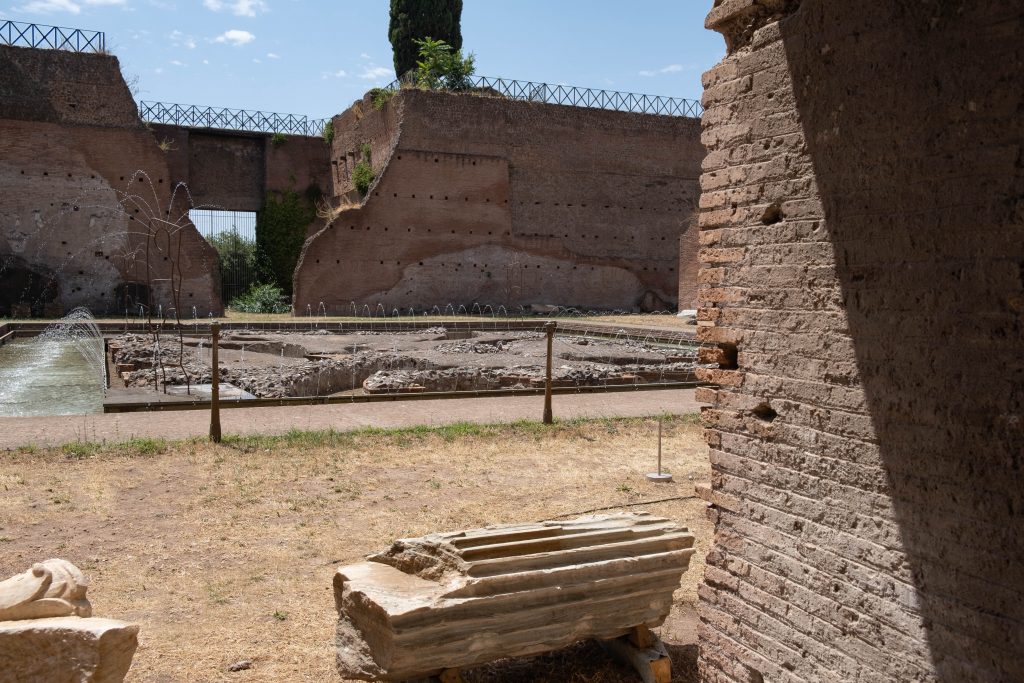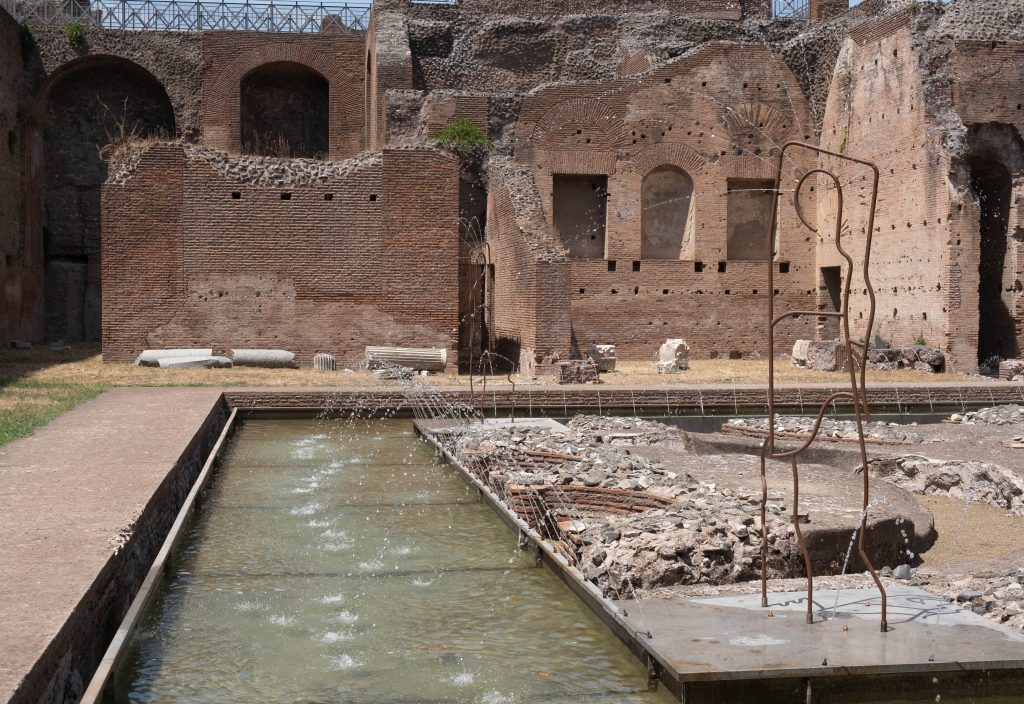From Wednesday, September 8, in the name of the “green” commitment of the Parco archeologico del Colosseo, water will flow again inside the Fountain with a Peltae motif, located in the lower courtyard of the Domus Augustana, the private sector of the huge imperial palace built by the Emperor Domitian on the Palatine.
After years of closure, the courtyard of the palace, which was formerly porticoed, is once again enriched by the sound and flow of water inside the monumental Fountain decorated with the motif of four opposing peltae, whose name recalls the shape of the shields carried by the Amazons. Furthering the project of re-functionalization of all the ancient and modern fountains of the Parco archeologico del Colosseo, started in June 2019 with the restoration of the Nymphaeum of Mirrors and the Fountain of the Papyri inside the Horti Farnesiani, today it is the turn of the Fountain that in Roman times brightened the walks of the imperial court between the Palatine Stadium and the private rooms overlooking the immense valley of the Circus Maximus.
The project, which takes the form of a proper installation associated with the Latin motto “Instar aquae tempus – Time flows incessantly like water”, was designed by landscape architect Gabriella Strano and carried out with full respect for the value and importance of water and the need to implement strategies to adapt to new climate conditions.
The “green” refunctionalization project of the Fountain with a Peltae motif
The installation reintroduced the presence of water in the perimeter basin of the ancient fountain without altering the structure of the monument in any way. The steel basin, totally removable, is laid on a nonwoven fabric and a lean mortar. Following an ancient collapse in the central structure, an opening was found that revealed an underground channel next to which it was possible to house all the hydraulic system for the completely recirculating water operation of the new fountain.
The aniconic metal statues at the four corners of the fountain are inspired by the Roman copy of the original bronze statue of the wounded Amazon, made for a competition organised by the Sanctuary of Artemis at Ephesus around 435 BC, with the participation of, among others, Polykleitos and Phidias, and depicted with the pelta (ancient shield) at her feet. From here, scented clouds diffuse fragrances that alternate according to seasonal rhythms or linked to archaic festivities: rose, pomegranate, jasmine, cinnamon, formerly used for religious or cosmetic purposes.


Study for the aniconic element of the Fountain with a Peltae motif on the Palatine inspired by the copy of the Wounded Amazon by Phidias in the Capitoline Museums in Rome.




